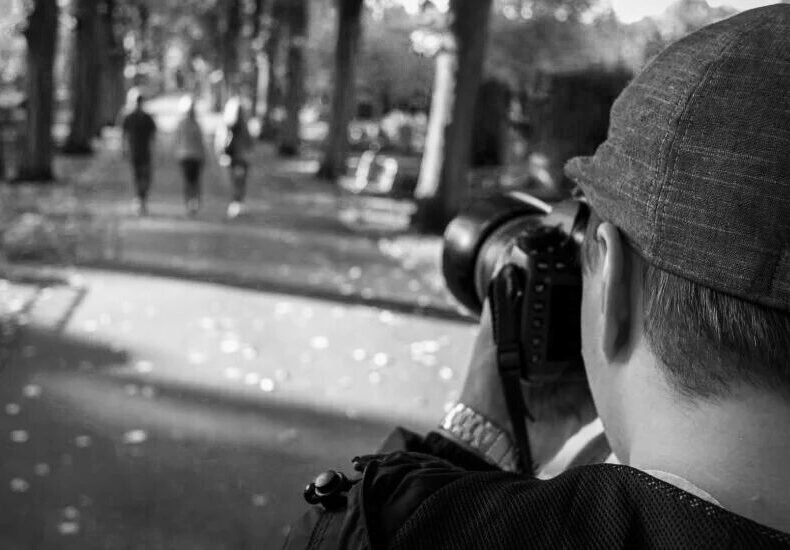
Cemetery Photography Tips: How to Capture Graveyards Respectfully
Cemeteries are places of stillness and memory, where the living walk softly among the stories of the past. They’re poetic spaces—equal parts history, art, and sacred ground. Photographing them, then, is not just about angles and lighting—it’s about empathy, respect, and storytelling.
So how do you capture the eerie elegance of a weathered angel or the soft light spilling across a mossy gravestone without turning the moment into a photo-op disaster? Let’s explore the art (and the ethics) of cemetery photography—a craft that blends observation with reverence.
Contents
- Understanding the Purpose: Why Photograph Cemeteries?
- Choose the Right Time of Day: Light Tells the Story
- Respect First, Photos Second: Cemetery Etiquette 101
- Composing Your Shot: Tell a Visual Story
- What to Photograph: The Details That Matter
- Legal & Ethical Considerations: Know the Boundaries
- Bottom Line
- FAQs
Understanding the Purpose: Why Photograph Cemeteries?
Is it for art? For documentation? For memory?
Whatever your reason, be clear about your intention. Cemetery photography sits in a unique niche—it flirts with history, brushes against grief, and often dips into the surreal.
As an architect and art historian, I photograph cemeteries because they are among the most overlooked yet profoundly expressive architectural spaces.
Each tomb, mausoleum, or gravestone is a microcosm of its era—blending symbolism, materiality, and spatial intent in ways that reflect shifting cultural values around death, memory, and permanence.
Cemeteries are not just places of mourning; they’re open-air museums where art meets function, where stone speaks, and where architecture embodies the sacred. Through my lens, I aim to document how design shapes remembrance and how even decay can reveal aesthetic and historical truths.
Unlike snapping shots at a beach, here you’re treading on emotional and spiritual ground. Your lens must act not as a thief of moments, but as a gentle translator.
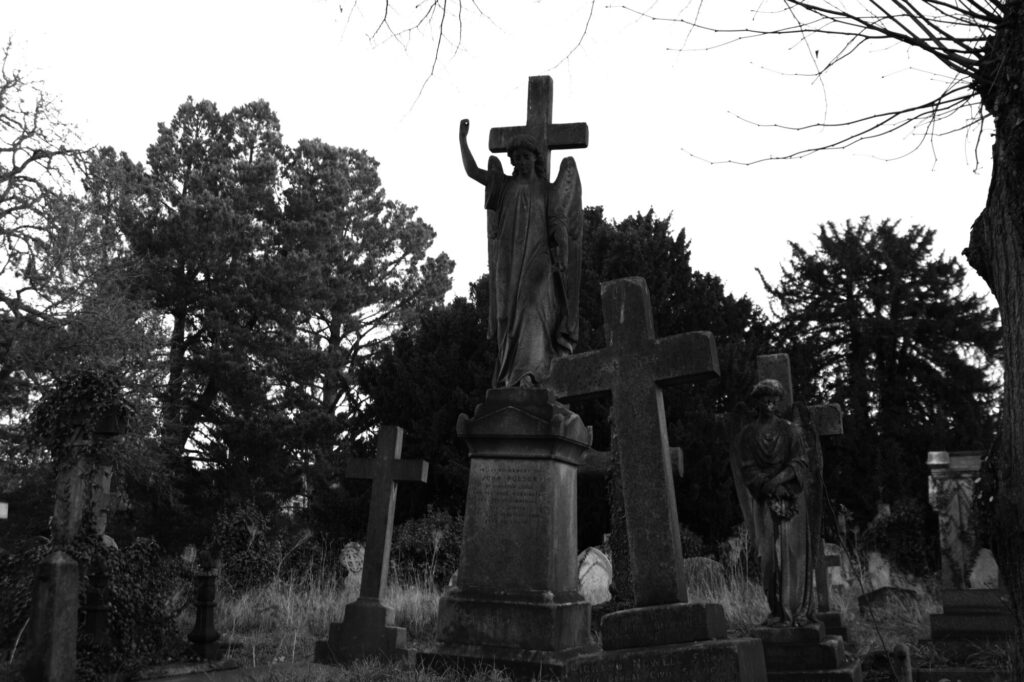
Choose the Right Time of Day: Light Tells the Story
Cemeteries are sculpted by light. That’s not just poetic—it’s practical. Early morning and golden hour (just before sunset) are your best allies.
- Morning Light: Cool, misty, and perfect for an ethereal mood. Shadows stretch long, and the atmosphere feels quieter—almost reverent.
- Golden Hour: Soft, warm hues highlight stone textures and bring out the colors of autumn leaves, old bronze, or marble carvings.
Midday light? Too harsh. Night? Tempting, yes—but requires special permission and careful ethical consideration (not to mention equipment).
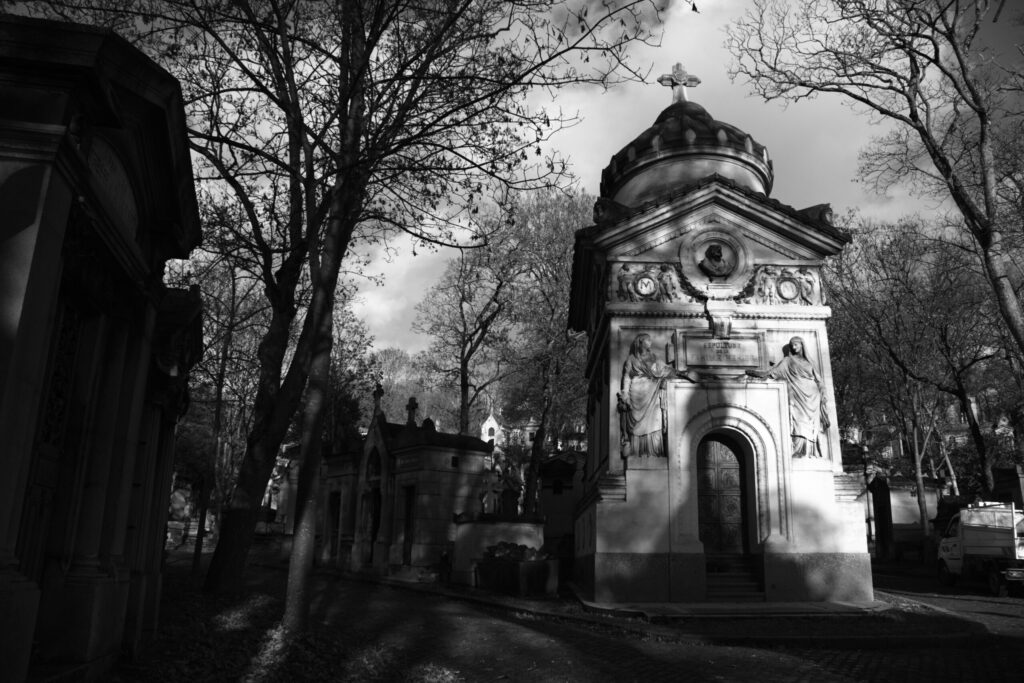
Respect First, Photos Second: Cemetery Etiquette 101
Here’s your golden rule: If you wouldn’t do it at a funeral, don’t do it here.
Remember, this is sacred ground—where families mourn, cultures remember, and time quietly rests.
Do:
- Research the cemetery’s rules—some prohibit photography altogether.
- Stay on paths and avoid stepping on graves.
- Keep noise (and laughter) to a minimum.
- Dress appropriately—respectfully, even if casually.
Don’t:
- Photograph grieving visitors or funerals.
- Sit, lean, or climb on tombstones.
- Treat it like an Instagram fashion shoot location.
Think of yourself as a guest, not an intruder.
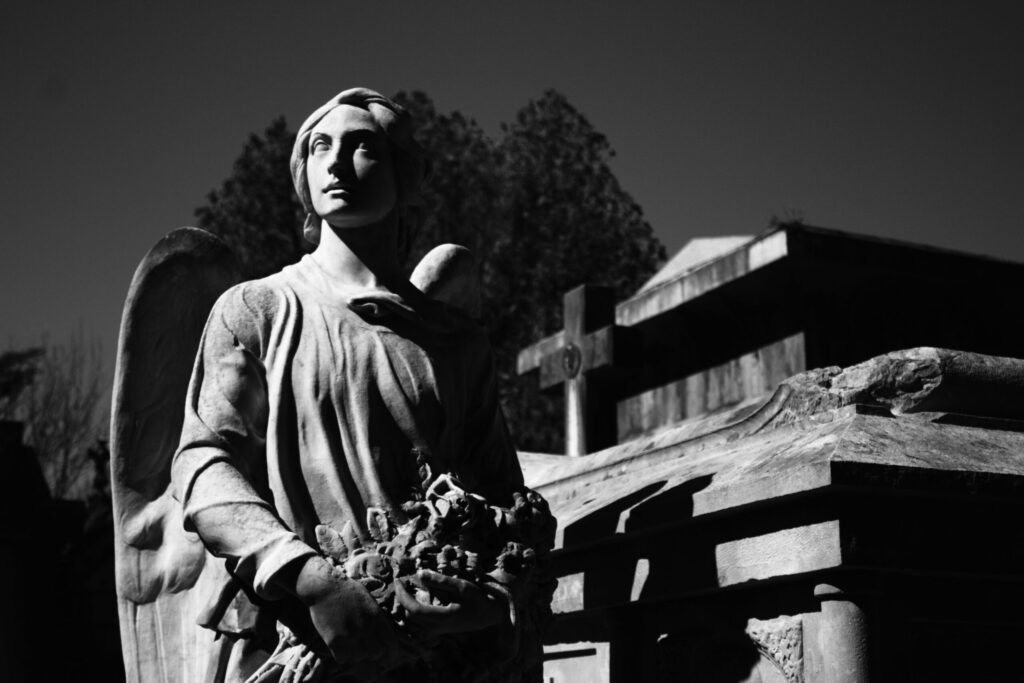
Composing Your Shot: Tell a Visual Story
A good cemetery photo isn’t just a snapshot—it’s a narrative.
Use Leading Lines: Paths, rows of headstones, iron gates, tree branches—they guide the viewer’s eye and evoke mood.
Play With Depth: Use foreground (a branch or inscription) to frame deeper elements in the background.
Get Close, Then Step Back: Capture a lichen-covered inscription in one shot, then zoom out to show its context—perhaps a lone grave beneath a sprawling oak.
Balance Symmetry & Chaos: A neatly aligned military cemetery and a tangled, overgrown village graveyard both tell stories. Capture both order and entropy.
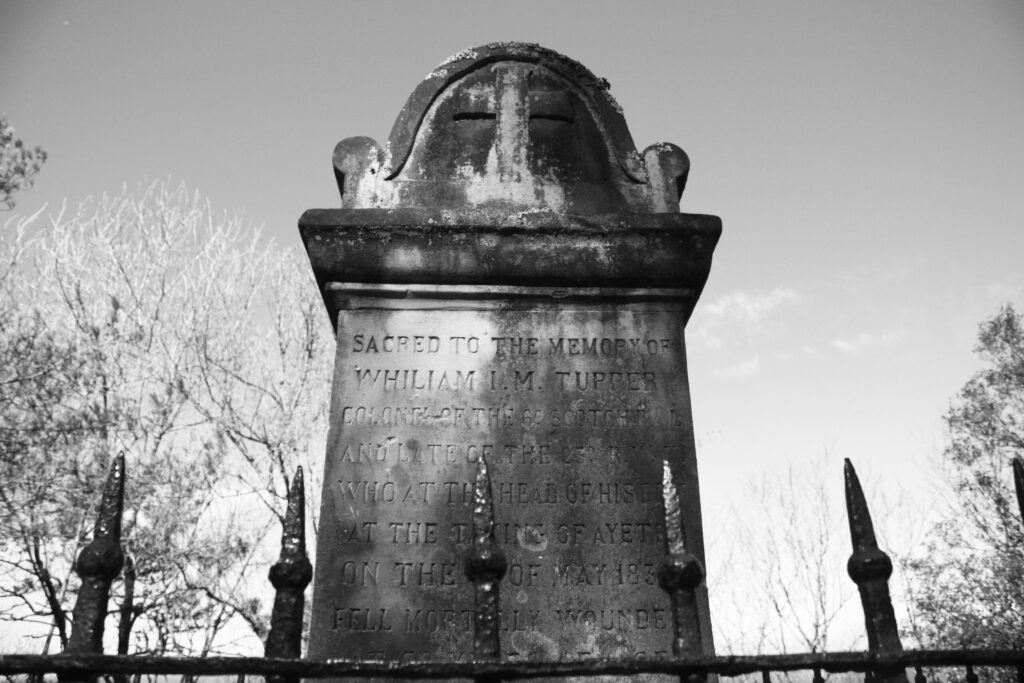
What to Photograph: The Details That Matter
There’s no shortage of subjects in a cemetery—but some are more evocative than others.
- Headstones & Inscriptions: Capture not just the names and dates, but how time has weathered the text.
- Sculptures & Symbolism: Angels, urns, skulls, broken columns—each symbol speaks. Photograph them with care.
- Landscape & Environment: Rolling hills, leaf-littered paths, or foggy trees provide atmosphere.
- Textures & Decay: Cracks in marble, rusting gates, mossy stone—aging adds character.
- Epitaphs: Don’t just capture the words—capture the tone. Humorous? Heartbreaking? Poetic?
Every grave tells a story—your photo should echo it, not shout over it.
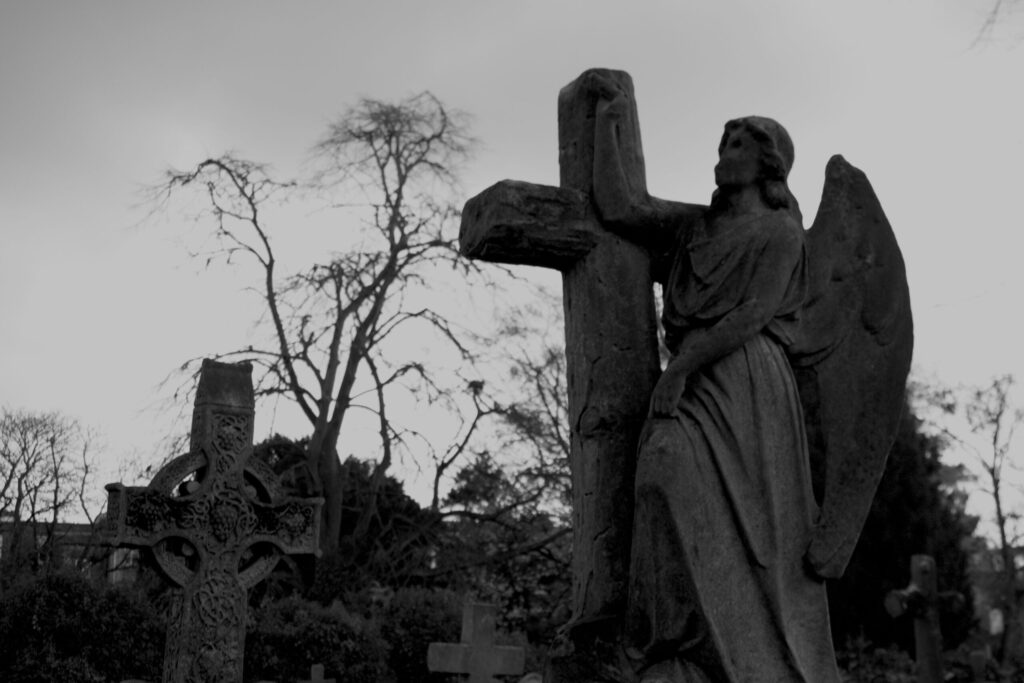
Legal & Ethical Considerations: Know the Boundaries
Public Cemeteries: Generally open for respectful photography—check posted rules.
Private Cemeteries: You may need written permission—even for editorial use.
Posting Online: Avoid full names unless the graves are historical. Always ask permission if living relatives are involved.
Selling Photos: Be cautious; commercialisation can cross ethical lines. Focus on art, not profit.
Remember: just because it’s old doesn’t mean it’s yours to share without care.
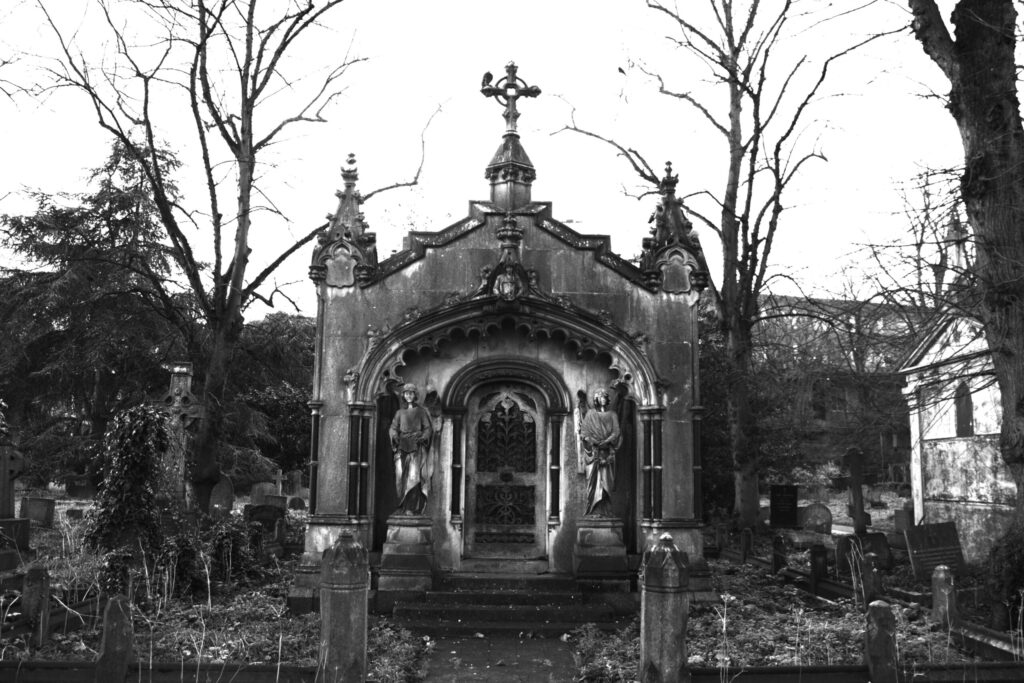
Bottom Line
Graveyards are more than final resting places—they are open-air museums, time capsules, and quiet libraries of human life.
When we photograph cemeteries with respect, we become part of a continuum—bearing witness, honoring memory, and elevating beauty in decay.
So bring your camera. Bring your curiosity. But most importantly—bring your reverence.
FAQs
No, not if done with awareness and care. Always research the cemetery’s policies and behave respectfully—treat it like a sacred space.
Yes, but avoid using them as aesthetic props. Focus on history, symbolism, or storytelling—and skip personal graves or funerals unless you have permission.
Public cemeteries usually don’t require permits for casual photography, but some historic or private ones might. Always check in advance.
Autumn is particularly atmospheric, but spring blooms, winter snow, and foggy mornings all offer unique moods. Choose based on the story you want to tell.
Embrace it! Overcast skies eliminate harsh shadows and enhance the somber mood. Use a tripod and longer exposure to work with the light you have.

Leave a Reply